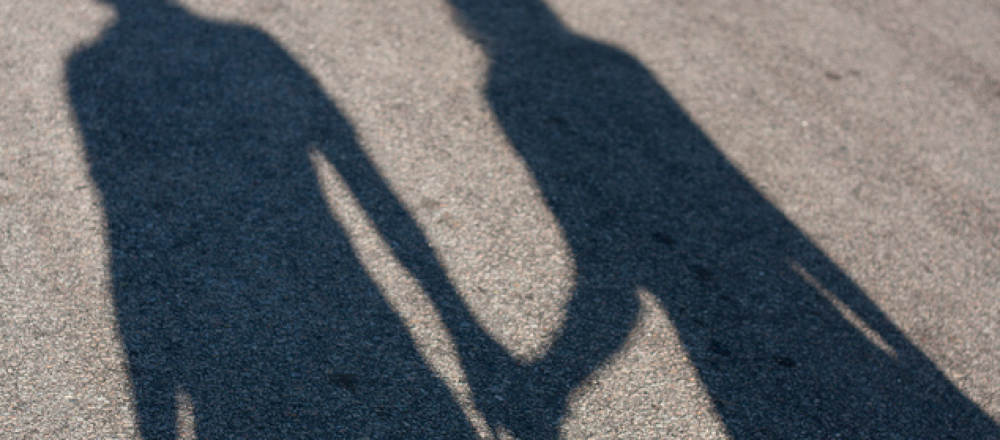When Hamid* walked into his trashed bedroom, he knew his mother had tried again to throw out any signs of his homosexuality.
Her subsequent degradations and threats would follow with justifications: “I was just trying to teach you a lesson”, or “you should be grateful”, or “you should feel lucky”.
While a fading bruise or a black eye may hint to the physical signs of family and domestic violence, emotional and verbal forms of abuse are just as crippling.
Hamid’s story is just one of many domestic and family violence accounts to feature in a submission prepared by the National LGBTI Health Alliance and to be heard in the current Senate inquiry Domestic violence in Australia.
Greg Adkins, Executive Director of Victoria’s Anti Violence Project, was one of the external parties consulted for the Senate submission. He has represented the LGBTIQ community for 18 years as a public voice, working with police and policy makers.
“When couples come to us, when one person is the perpetrator of domestic violence, and the other person wants to stay in the relationship, there are very few places we can send perpetrators of same gender relationship violence to work through the reasons causing the violence,” he says.
“You can’t send a lesbian perpetrator to a room full of male perpetrators of domestic violence – it would be totally inappropriate.”
Existing Australian statistics around family and domestic violence are troubling. In a 2006 report titled Private Lives: A report on the health and wellbeing of GLBTI Australians, 33 per cent of respondents had experienced domestic violence within a relationship context.
But, as the National LGBTI Health Alliance’s Senate submission shows, just three in 10 people from the LGBTIQ community report family and interpersonal violence to police in metropolitan regions, with even fewer reporting in rural or regional areas.
Last year Victoria Police responded to over 68,000 instances of family violence, with assaults accounting for half of the total reports of violence.
Dean McWhirter is the Victoria Police Family Violence Command Assistant Commissioner, and agrees that cases of LGBTIQ domestic and family violence remain heavily underreported. “Research and our statistics tell us that the majority of family violence is committed by men against women. However, we know that it is an issue which affects the whole Victorian community and is under-reported in the LGBTI community,” he says.
The stigma attached to LGBTIQ domestic and family violence
Adkins says the way the media responds to cases of LGBTIQ domestic and family violence can be a “double-edged sword”. ‘The media are quick to promote [this problem as] something that is different, ad-hoc, gimmicky, almost in a fetish-like way,” he says.
He cites the media’s coverage of a South Yarra homicide, where Michael O’Neil murdered long-term partner Stuart Rattle, where the sexuality of the two men was written about as a quirky factor. “The media was almost putting less of the importance of the gay relationship compared to straight relationships”, Adkins says.
“That level of relationship violence is happening all the time in the heterosexual community, so why don’t they discuss us, and the heterosexual community, in the same conversation?
“It almost demeaned gay relationships and made them less worthy than hetero-normative relationships.”
According to Gavi Ansara, Research and Policy Manager at the National LGBTI Health Alliance, this kind of stigma often prevents victims from coming forward. “If there was less stigma and less discrimination, people would feel that it would be easier to seek support from organisations within the sector set up to do that,” he says.
“What struck me while doing the research and writing for the [Senate] submission is just how much of people’s everyday experience with interpersonal and interfamily violence is not being studied anywhere.”
Ansara says this lack of research also fails to counter some public misconceptions around the forms of family and domestic violence experienced in a non hetero-normative family unit. “In a relationship with a butch woman and a fem woman, the butch woman was always assumed to be the abuser, which is actually not what we were told was happening.
“You’ve got the assumption that [when] people are living together, people who are biological relatives are automatically counted as family unless otherwise specified, and those who aren’t biologically related don’t count as family unless otherwise specified. And so that also raises a number of problems.
“It becomes harder to decide which battles to fight. If an intimate partner is being abusive, it’s almost an experience that is being normalised.”
Adkins says greater awareness is key to incite necessary changes to services and support, and that the “visibility” of the LGBTIQ community is essential in starting a better conversation. “If relationship violence is hidden all over, and awareness is down, we’re even less likely to not have it discussed and so victims of violence feel even more isolated because of a lack of visibility,” he says.
So how can we build awareness? “We need resources,” Adkins says. “We need not just one-off campaigns, but national and state frameworks that resource these issues.”
“Relationship violence is too important and too much of a canker in Australian society for it to be done by volunteer organisations that are unfunded.”
—
*Names in the Senate submission were changed.
Troy Nankervis is a freelance journalist from Melbourne.
Feature image: Trevor Hurlbut/Flickr


